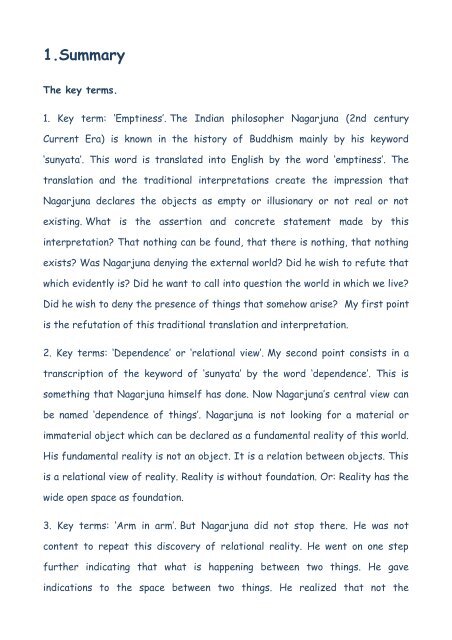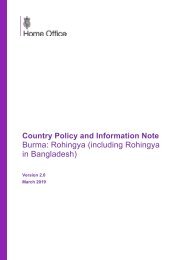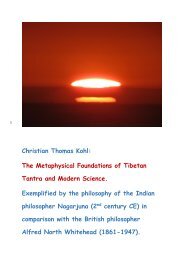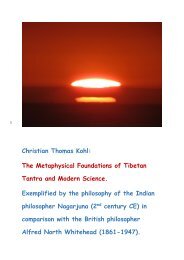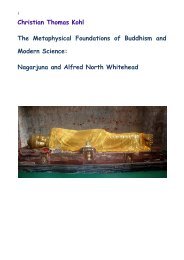Christian Thomas Kohl The Metaphysical Foundations of Buddhism and Modern Science
Christian Thomas Kohl The Metaphysical Foundations of Buddhism and Modern Science
Christian Thomas Kohl The Metaphysical Foundations of Buddhism and Modern Science
Create successful ePaper yourself
Turn your PDF publications into a flip-book with our unique Google optimized e-Paper software.
1.Summary<br />
<strong>The</strong> key terms.<br />
1. Key term: ‘Emptiness’. <strong>The</strong> Indian philosopher Nagarjuna (2nd century<br />
Current Era) is known in the history <strong>of</strong> <strong>Buddhism</strong> mainly by his keyword<br />
‘sunyata’. This word is translated into English by the word ‘emptiness’. <strong>The</strong><br />
translation <strong>and</strong> the traditional interpretations create the impression that<br />
Nagarjuna declares the objects as empty or illusionary or not real or not<br />
existing. What is the assertion <strong>and</strong> concrete statement made by this<br />
interpretation? That nothing can be found, that there is nothing, that nothing<br />
exists? Was Nagarjuna denying the external world? Did he wish to refute that<br />
which evidently is? Did he want to call into question the world in which we live?<br />
Did he wish to deny the presence <strong>of</strong> things that somehow arise? My first point<br />
is the refutation <strong>of</strong> this traditional translation <strong>and</strong> interpretation.<br />
2. Key terms: ‘Dependence’ or ‘relational view’. My second point consists in a<br />
transcription <strong>of</strong> the keyword <strong>of</strong> ‘sunyata’ by the word ‘dependence’. This is<br />
something that Nagarjuna himself has done. Now Nagarjuna’s central view can<br />
be named ‘dependence <strong>of</strong> things’. Nagarjuna is not looking for a material or<br />
immaterial object which can be declared as a fundamental reality <strong>of</strong> this world.<br />
His fundamental reality is not an object. It is a relation between objects. This<br />
is a relational view <strong>of</strong> reality. Reality is without foundation. Or: Reality has the<br />
wide open space as foundation.<br />
3. Key terms: ‘Arm in arm’. But Nagarjuna did not stop there. He was not<br />
content to repeat this discovery <strong>of</strong> relational reality. He went on one step<br />
further indicating that what is happening between two things. He gave<br />
indications to the space between two things. He realized that not the


